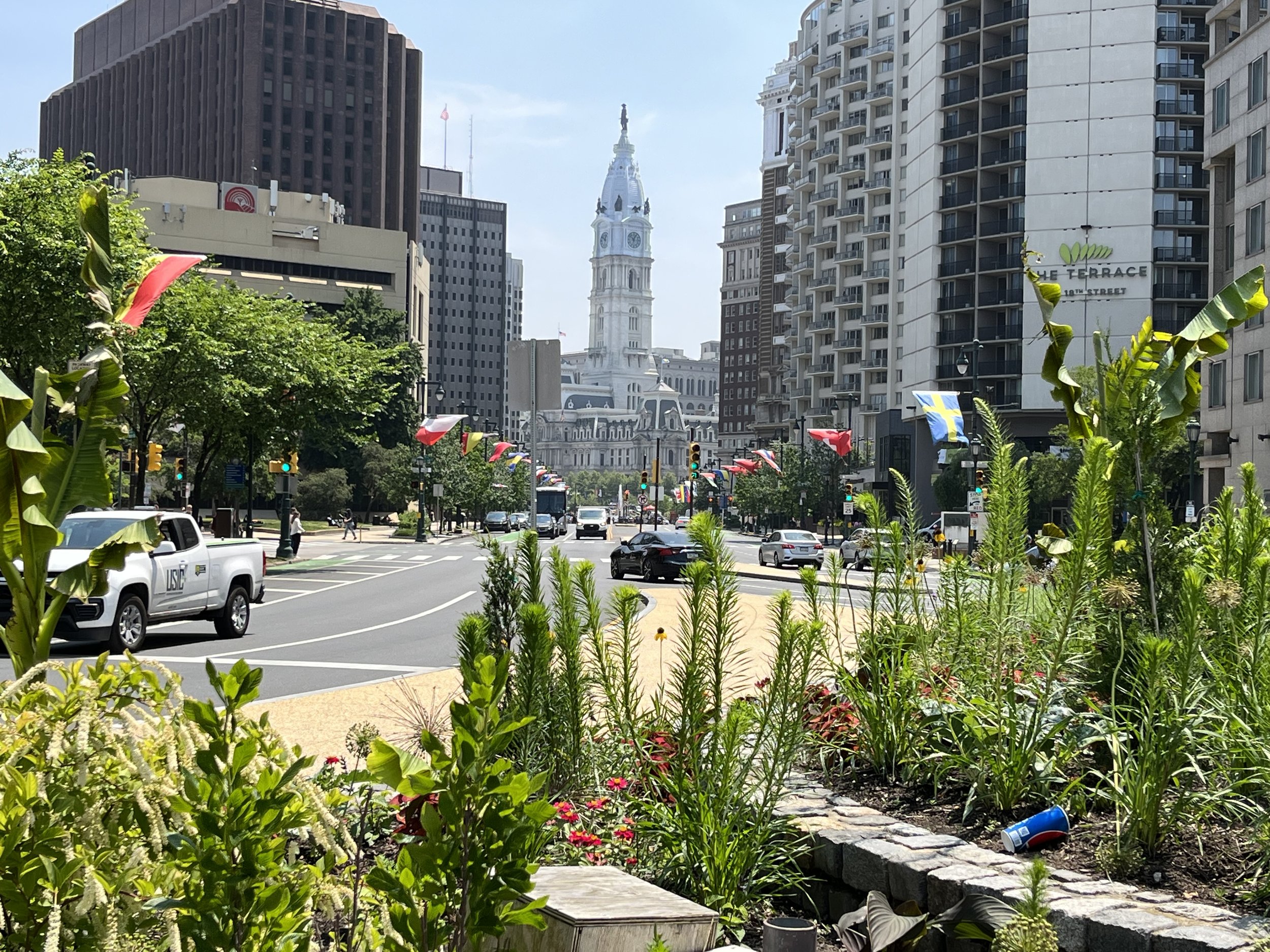My “Aha” Moment – Part 1
How I learned the real truth about Billy
Penn and his City of Brotherly Love
Members of the Greater Philadelphia Falun Dafa Association gather regularly in front of Independence Hall to protest Chinese Communist persecution against them. Photo by Jim Murphy, author of “Real Philly History, Real Fast.”
I know exactly when the question hit me.
While waiting at the side of The Constitution Center for a tour group from Mumbai, I looked down at Independence Hall and asked myself: “What was Philadelphia like when William Penn got here”? The answer was very different from what I learned growing up.
Fibs and falsehoods
Yes, Penn’s Philadelphia — or “City of Brotherly Love”– was built on what might be called farmland. But it was wooded farmland, what the oldest Swede who was here before Penn said “was a great forest.”
And those trees were not soft pine trees, as some claimed
Most of the land included a hardwood forest “of oak, black walnut, chestnut, cypress, hickory, beech and elm,” says “Philadelphia: A 300-Year History,” edited by Russell F. Weigley.
So Philadelphia was actually carved out of a forest tree by tree, not an easy task. Yet, as William Penn said, his city grew as much in seven years as most did in 40.
Penn and Ben helped spur Philly’s remarkable growth
In part, that success was due to Philly’s two superstars: Penn and Ben, or William Penn and Ben Franklin. Penn set up the whole city administration and Ben Franklin, who missed Penn by about 20 years, simply improved everything he touched .
Between the two of them, Philadelphia, “The City of Brotherly Love” grew like it was on Miracle-Gro.
NYC and Boston were “grandpops” in 1682
In fact, I like to tell tourists that Philadelphia started 58 years after New York City and 52 years after Boston. When Philadelphia was born, they were “grandpops” who would have already been eligible for the American Association of Retired Persons (AARP), if it had been in existence then.
Yet by 1770 or earlier … Philly was the largest, most important and some say most cultured city in America
Surprisingly … even the oldest oil painting we have of an American city features the young city of Philadelphia. It’s “The South East Prospect of the City of Philadelphia” by Peter Cooper, painted about 1718.
The South East Prospect of the City of Philadelphia is the oldest surviving oil painting of a North American City — and one of the most valuable. It was found in the rubbish of a London curiosity shop about 1857. Courtesy of the Library Company of Philadelphia [https://librarycompany.org].
Interesting oddities:
The painting is quite large, about 8 feet wide by 1 1/2 feet deep. A member of Parliament discovered it in the rubbish of a London curiosity shop in 1857 and gave it to former Philadelphia mayor George Mifflin Dallas. He also was vice-president of the U.S. and some say the man Dallas, Texas is named for. Imagine that, Cowboy fans. You may be named for a Philadelphian!
Peter Cooper, a sign painter, reportedly painted this unique piece. That’s all we know about him. Note: Cooper included a figure of himself in the bottom left of the painting … plus an index of prominent families and landmarks in the city.
This painting used to sit prominently in the Library Company of Philadelphia’s lobby. The last time I was there, though, it had been moved to the employee cafeteria. Not sure why.
A visiting Scottish-born physician named Alexander Hamilton wrote this in 1744 –
“I dined at a tavern with a very mixed company of different nations and religions. There were Scots, English, Dutch, Germans, and Irish; there were Roman Catholicks, Churchmen, Presbyterians, Quakers, Newlightmen, Methodists, Seventhdaymen, Moravians, Anabaptists, and one Jew.”
This was William Penn’s real legacy as this photo below proves: he invited people of all religions to come here … and they did
The result: 108 flags of countries with a “significant representation” in Philadelphia … plus Puerto Rico. Photo by Jim Murphy
But, Penn was not perfect
Of course, like most human beings, William Penn had his faults. He rarely saw his children, was not great at handling money and also had at least 12 slaves.
But he did wonderful things for Philadelphia and the U.S.
More on that to come in future blogs.
Some Sources:
https://dallascityhall.com/government/citysecretary/archives/Pages/Archives_DallasNameOrigin.aspx
https://digital.librarycompany.org/islandora/object/digitool%3A59429
Weigley, Russell F., ed. Philadelphia: A 300-Year History, New York: W.W. Norton and Company, 1982.


